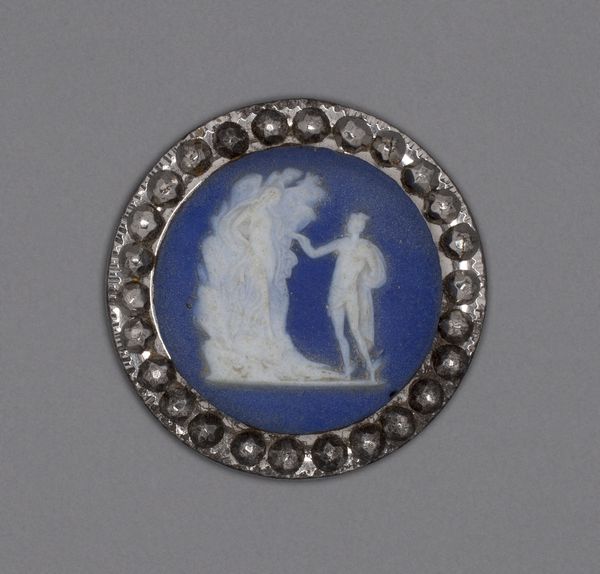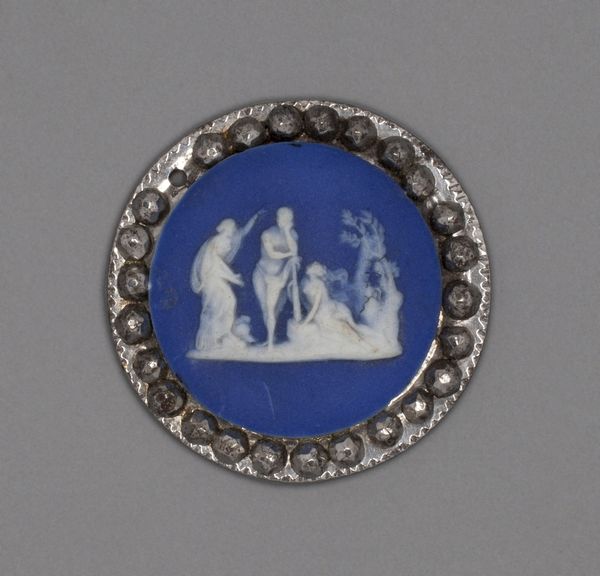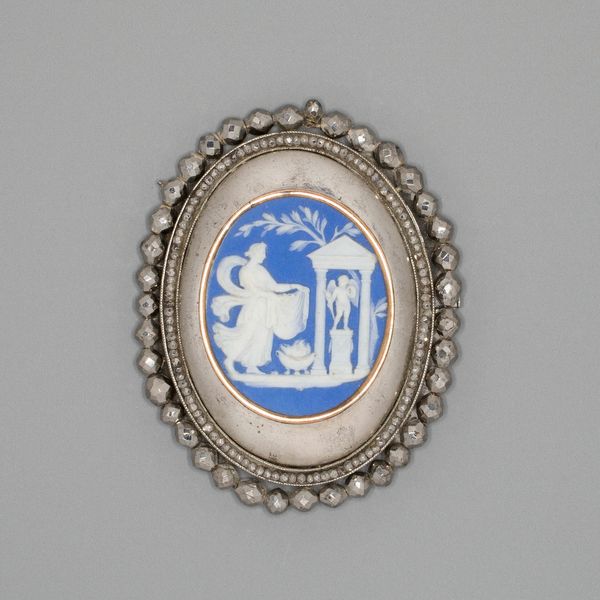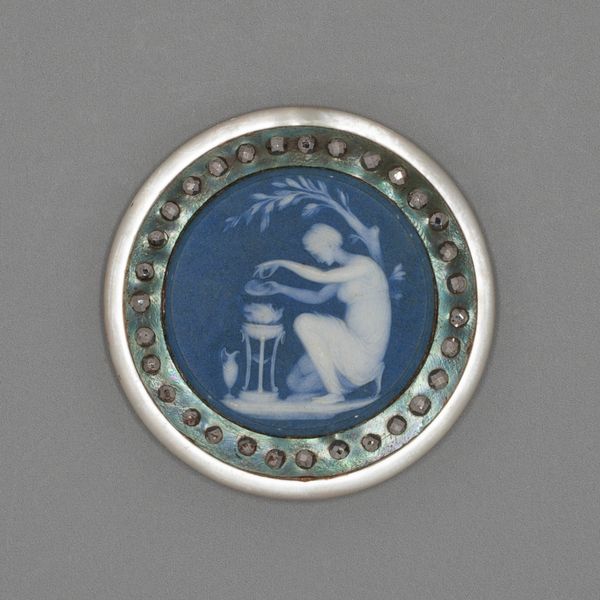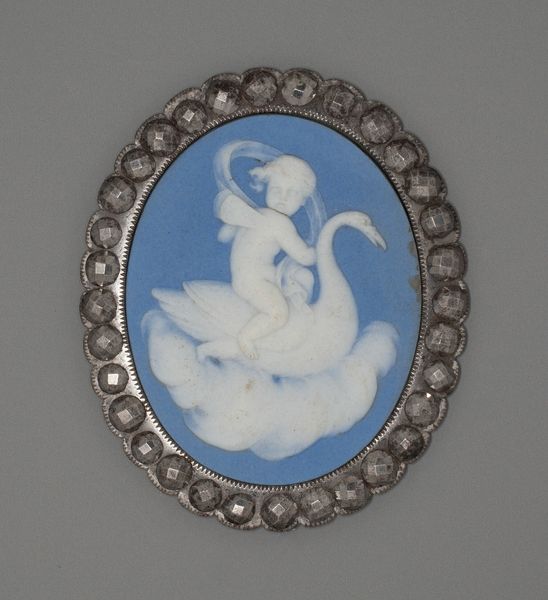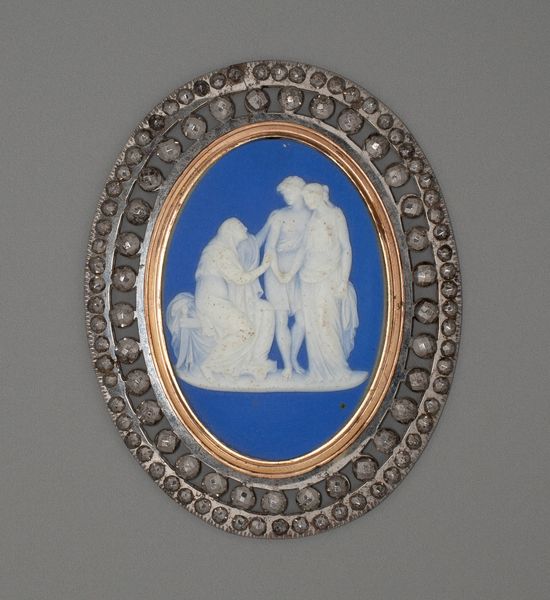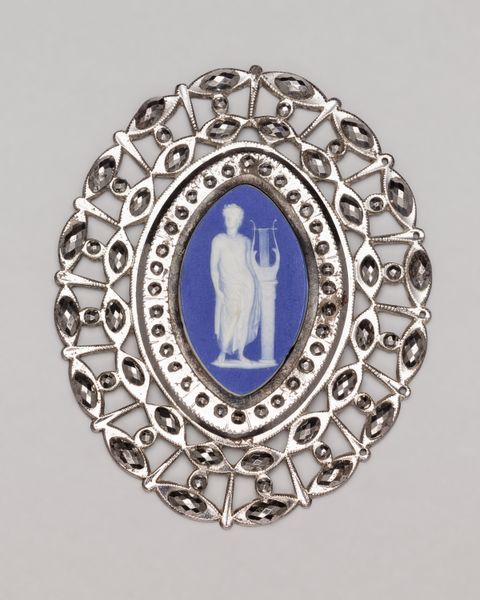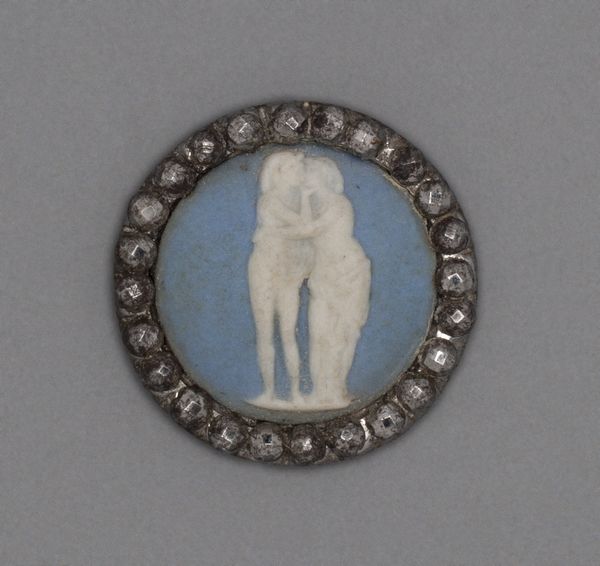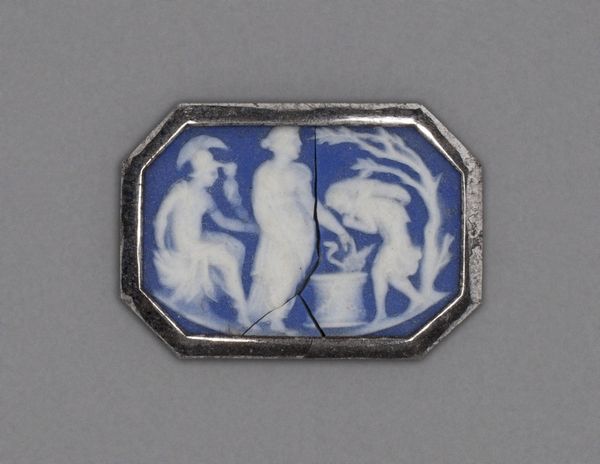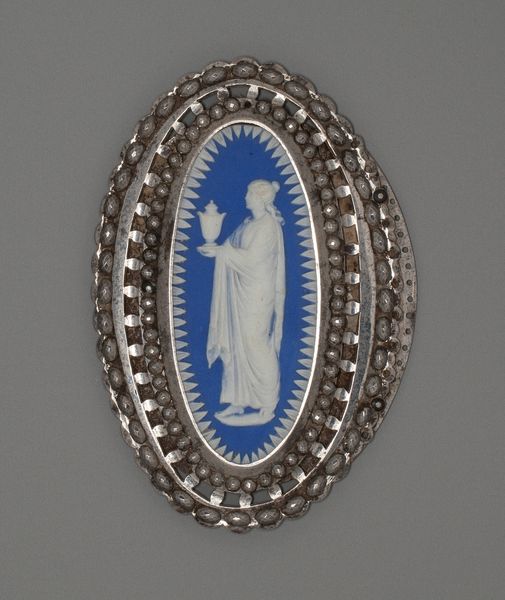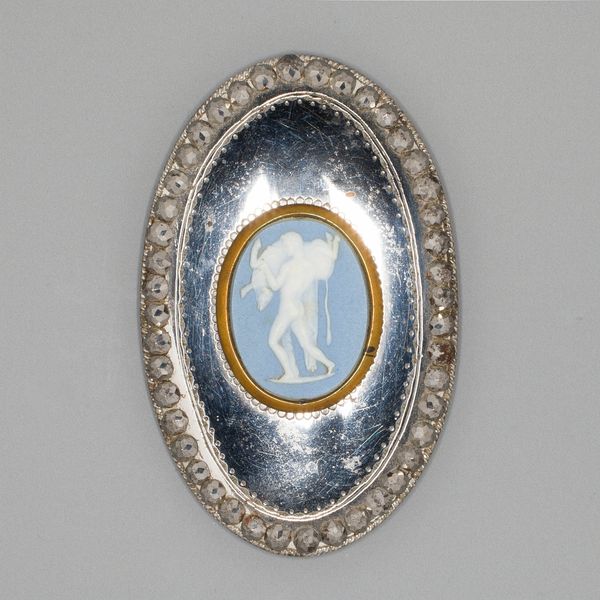
Button with Sacrifice to Hygieia c. late 18th century
0:00
0:00
ceramic
#
portrait
#
neoclacissism
#
ceramic
#
figuration
#
ancient-mediterranean
#
decorative-art
Dimensions: Diam. 3.5 cm (1 3/8 in.)
Copyright: Public Domain
Editor: Here we have a button, crafted around the late 18th century by the Wedgwood Manufactory, titled "Button with Sacrifice to Hygieia". It's ceramic, with a scene in white against a rich blue background. It's really quite delicate and striking, actually! I'm wondering, with such a piece, how does the context of its creation inform its message? Curator: The late 18th century witnessed a fervent revival of classical aesthetics known as Neoclassicism. Wedgwood, as a manufactory, strategically tapped into this widespread fascination with antiquity, providing decorative objects for a burgeoning middle class eager to associate themselves with classical ideals of beauty, virtue, and order. Notice how Hygieia, the goddess of health, is rendered in this button. Consider its functionality. A button! How does the everyday usage change how this imagery could have been received, and, in a way, almost democratized such allegorical representation? Editor: That’s fascinating! So, wearing this button wasn’t just about fashion, but almost a statement? Were people really thinking about ancient goddesses when buttoning their coats? Curator: Perhaps not *every* time. However, the proliferation of these classically-themed objects undoubtedly played a role in shaping the visual culture and even political discourse of the time. The imagery reinforced societal values, projected social status, and facilitated cultural capital among those who understood the references. What are your thoughts on the political dimensions of this embrace of classicism in the late 18th Century? Editor: Well, considering the French and American Revolutions brewing at that time, this button feels a bit like a conservative statement, promoting stability and order rather than radical change. That’s really interesting – it's not just decorative. I’ll certainly see buttons differently now! Curator: Exactly! This little button encapsulates how art can both reflect and shape its historical moment. And that, in turn, reminds us how seemingly minor everyday items can become powerful indicators of social values.
Comments
No comments
Be the first to comment and join the conversation on the ultimate creative platform.
